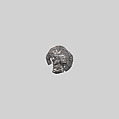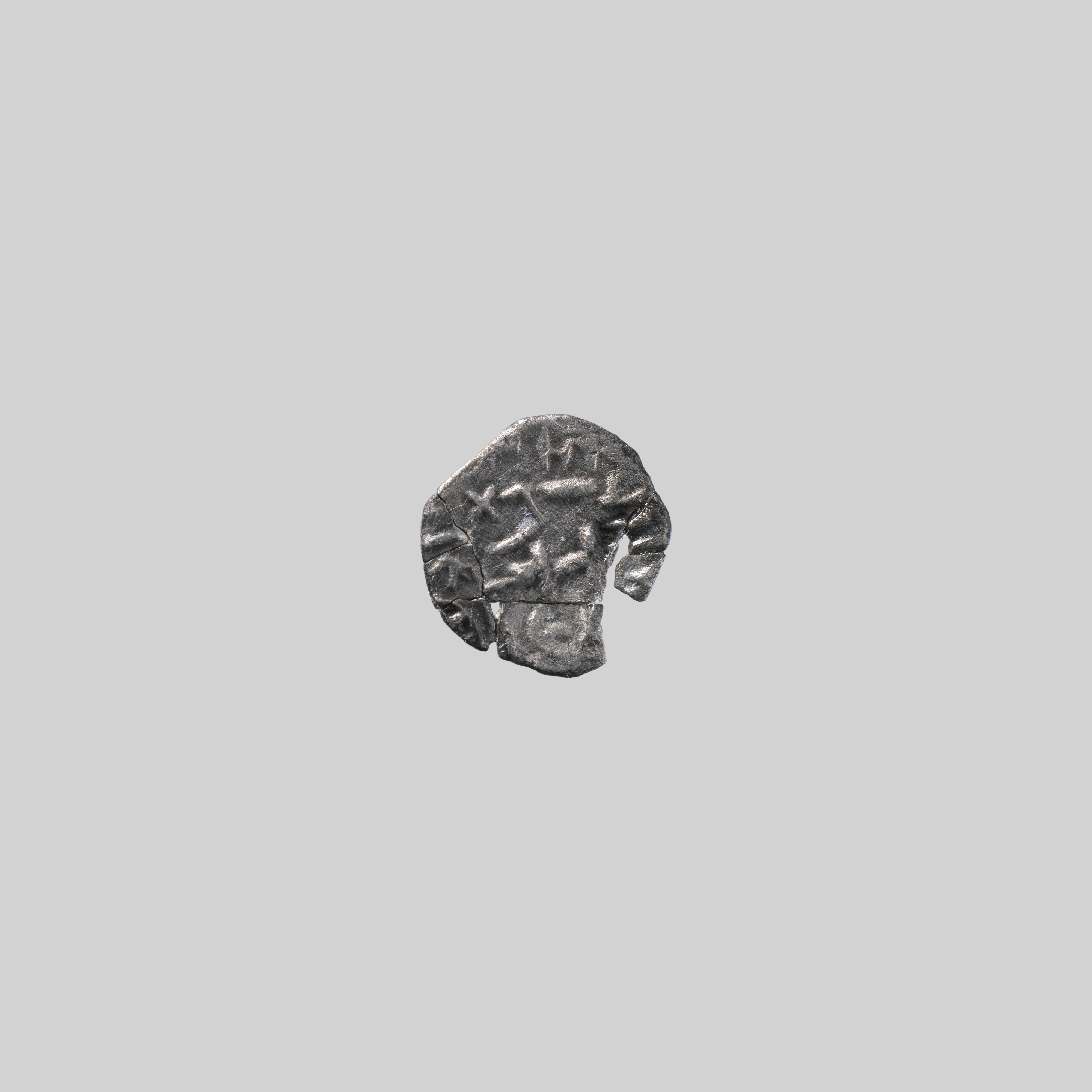Obol
Not on view
Numismatists – the scholars who study coins – refer to the ‘front’ side of the coin, which usually features the head of a person or god, as the ‘obverse,’ and the ‘back’ side as the ‘reverse.’
This small silver coin is in fragmentary condition, making it difficult to identify the types on it. On the obverse, a bust of the king faces to the left. He has a beard and long wavy hair, and wears a crenelated crown. The image is surrounded by a border of dots. The reverse type is all but impossible to discern, though parts of a Persian inscription are visible.
This coin was minted by King Ardashir II of Persis, sometime in the first century B.C. Persis refers to a region in southwestern Iran which was the heartland of the Achaemenid Empire. Under the Seleucids and Parthians, Persis was ruled by client kings like Ardashir, who combined elements of Achaemenid, Seleucid and Parthian iconography on their coins.
This coin was excavated at Qasr-i Abu Nasr, near Shiraz. Much of the material from the site dates to the Sasanian period (A.D. 224-651); this coin is one the few objects suggesting it was occupied in the Parthian period as well.
Due to rights restrictions, this image cannot be enlarged, viewed at full screen, or downloaded.
This artwork is meant to be viewed from right to left. Scroll left to view more.



